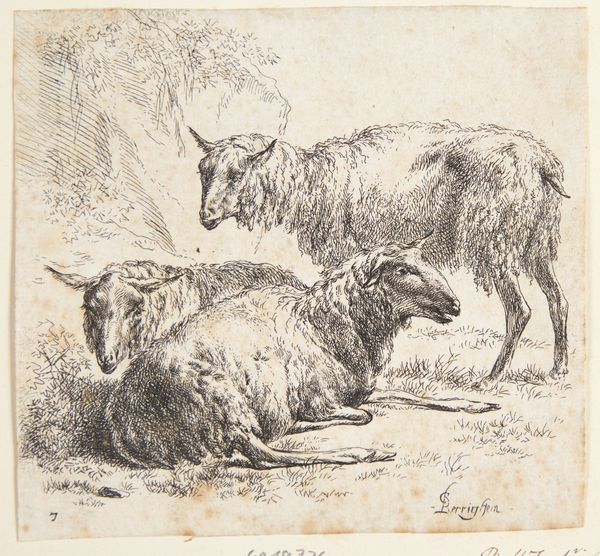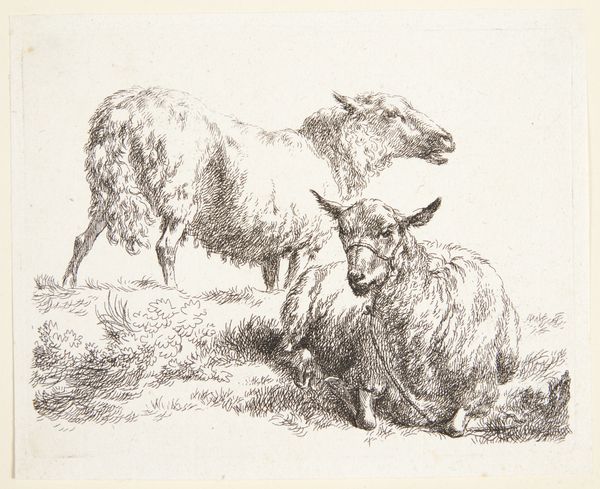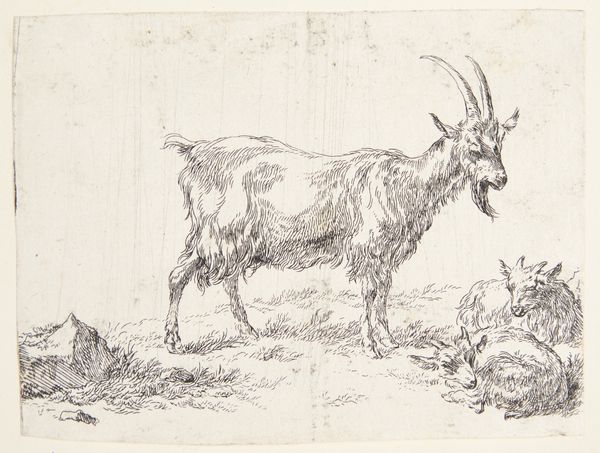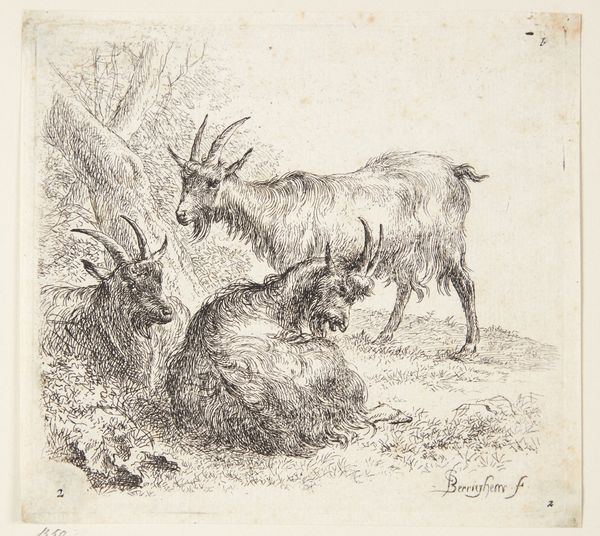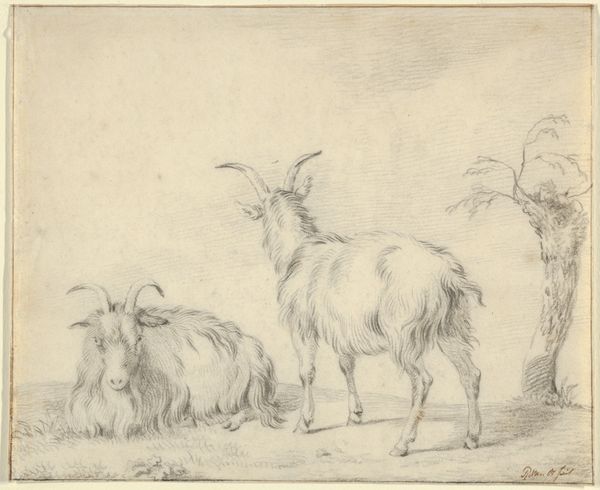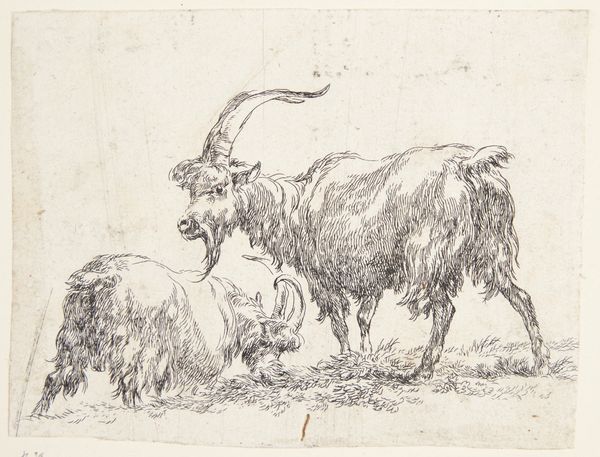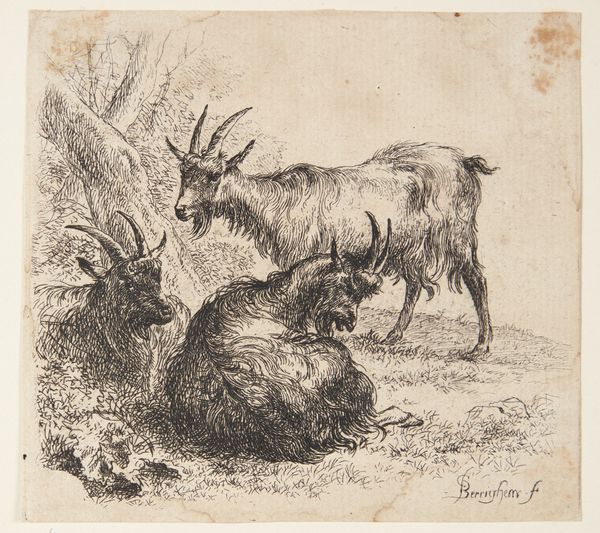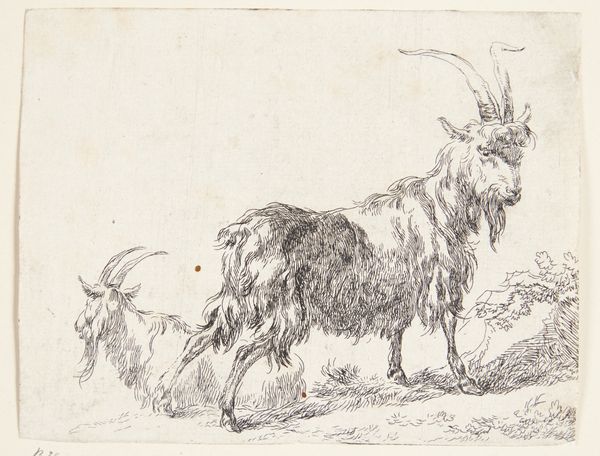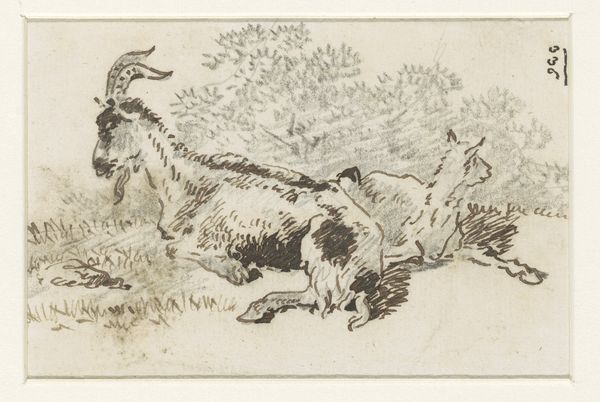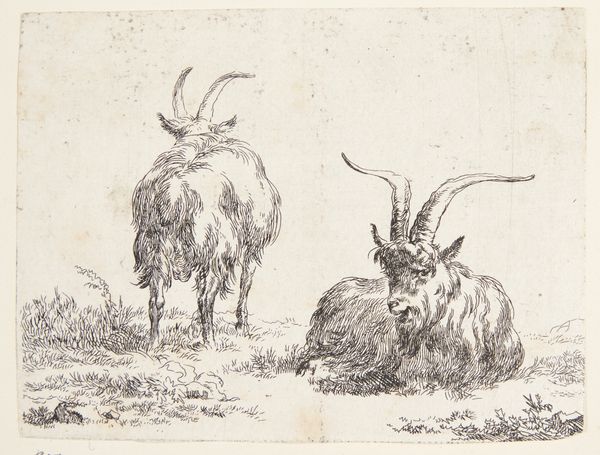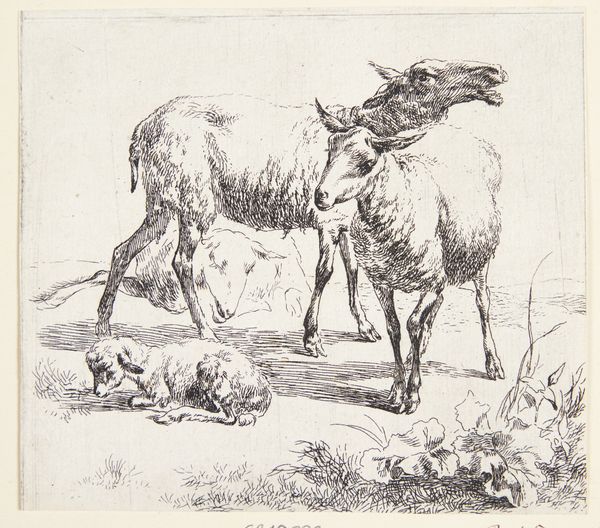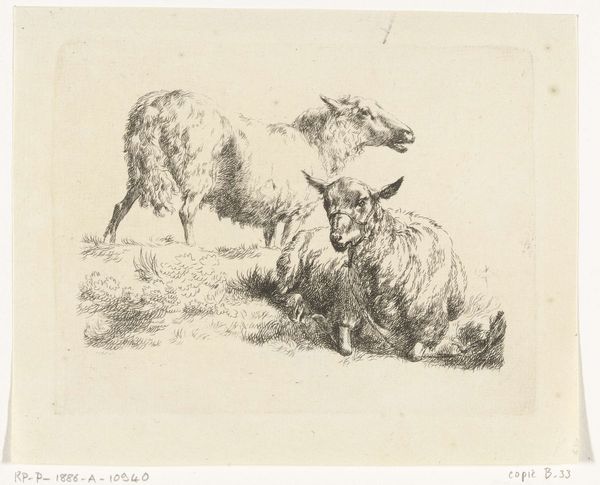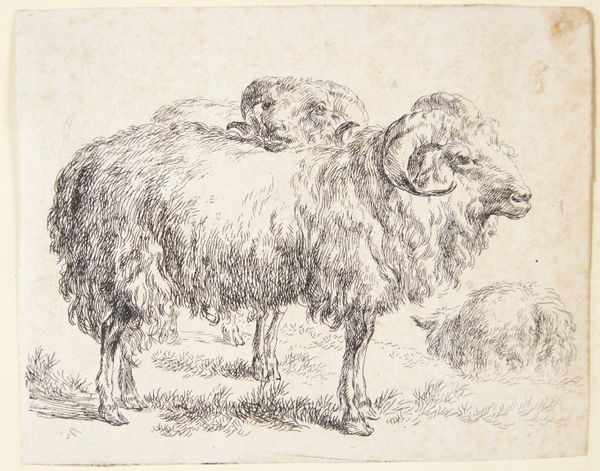
drawing, print, etching, ink
#
drawing
#
ink painting
#
animal
# print
#
etching
#
landscape
#
ink
Dimensions: 103 mm (height) x 130 mm (width) (bladmaal)
Editor: Here we have Nicolaes Berchem’s "Et stående og et liggende får," which translates to "A Standing and a Lying Sheep," created sometime between 1620 and 1683. It's an ink drawing, almost a sketch, of sheep in a field. It strikes me as quite pastoral and simple. What can you tell me about it? Curator: Pastoral scenes were incredibly popular in 17th-century Dutch art, reflecting a societal longing for an idealized, simpler rural life. But let’s think critically about this idealization. Who did these idyllic representations serve? How do they possibly mask the realities of rural life, the economic disparities, and the labor exploitation inherent in agrarian societies of the time? Editor: That’s a perspective I hadn’t considered! I guess I was just seeing fluffy sheep. Curator: The seemingly simple image can become a site for interrogating the power structures at play. Consider the role of animals in such societies. Were sheep merely passive objects, part of a picturesque backdrop? Or can we read them as symbols of dispossession, mirroring the plight of marginalized human populations who were similarly ‘managed’ and exploited? How do these sketches perpetuate the myth of rural tranquility? Editor: So you're suggesting Berchem's drawing, while seemingly innocent, might unintentionally contribute to a narrative that normalizes exploitation? Curator: Precisely. Art is rarely neutral. Even these tranquil images reinforce or challenge prevailing ideologies. Think about who owned the land, who benefitted from the wool and the meat, and whose labor sustained this pastoral fantasy. Editor: It really changes how I see the drawing. I thought it was just, well, sheep! Curator: And that's the power of context! Understanding the historical and social forces shaping the artwork encourages a deeper, more critical viewing experience. We start to recognize that these images are not simply reflections of reality but rather constructions of it, laden with complex social and political implications. Editor: I’ll never look at a pastoral scene the same way again. Thanks for opening my eyes!
Comments
No comments
Be the first to comment and join the conversation on the ultimate creative platform.
